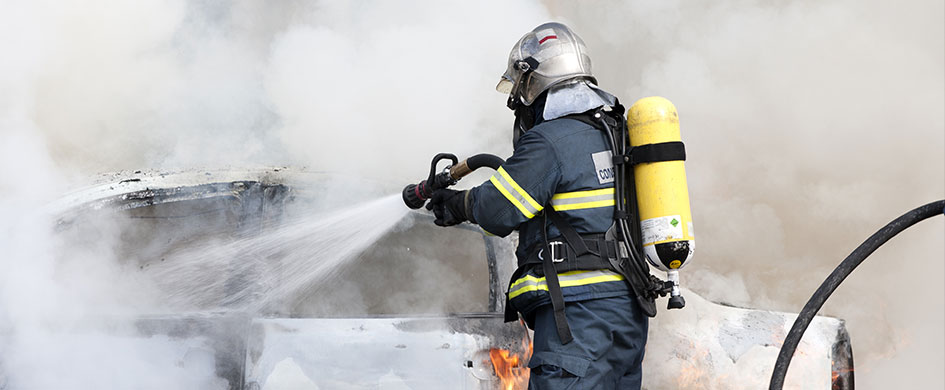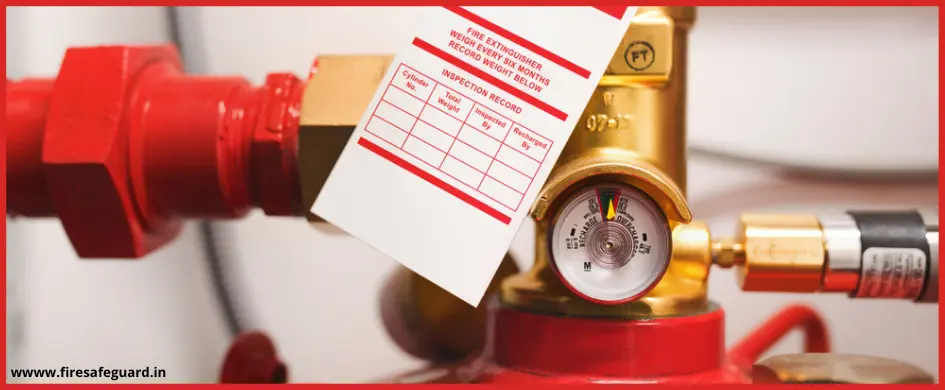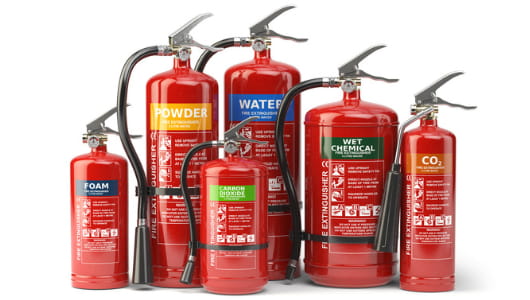In the fire suppression technologies market, protein foam concentrates stand out as versatile solutions capable of tackling a wide array of fire hazards across diverse environmental conditions. From industrial settings to residential areas, their versatile fire suppression capabilities make them indispensable tools in ensuring environmental fire safety.
Protein foams are renowned for their adaptability and efficacy in combating fires fueled by various substances. Their unique formulation allows them to swiftly smother flames by forming a thick, durable blanket that suppresses oxygen and cools the fire’s surface. This protein foam versatility extends beyond traditional flammable liquid fires to encompass challenges posed by combustible solids and even polar solvent fires, making them a preferred choice in multifaceted fire scenarios.
Composition and Functionality of Protein Foam
Protein foams are specifically formulated fire suppression agents that utilize natural proteins derived from animal sources such as blood or fish. These foams work by rapidly forming a cohesive blanket over the fire, cutting off the oxygen supply and cooling the flames. This dual-action approach not only extinguishes the fire but also prevents re-ignition, making them highly effective in combating various fire types.
The unique formulation of protein foam includes stabilizers, preservatives, and other additives that enhance its performance. When applied to a fire, the foam expands and forms a thick, stable layer that adheres to surfaces.
This layer is like barrier that prevent oxygen from reaching the fuel and thereby suffocating the flames. Additionally, the water content in the foam helps to cool the fire, reducing the risk of re-ignition and further spread.
Versatile Fire Suppression Applications
Protein foam concentrates are renowned for their versatility, which allows them to be used in a wide range of fire suppression applications. Below are some of the key areas where protein foam applications have proven to be highly effective:
Industrial Environments
In industrial settings, where flammable liquids and chemicals pose significant fire risks, protein foam concentrates excel.
- Their ability to suppress fires involving hydrocarbons, such as gasoline and diesel, is well-documented.
- Moreover, they are equally effective against polar solvent fires, offering a versatile solution for diverse chemical manufacturing and storage facilities.
- Industrial fires often involve large quantities of flammable materials, which can lead to rapid fire spread and severe damage. Protein foam is particularly effective in these scenarios due to its ability to form a stable foam blanket that covers the fuel surface.
- This blanket not only extinguishes the fire but also prevents the release of flammable vapors, thereby reducing the risk of secondary explosions.
Residential and Commercial Buildings
These foams are also invaluable in residential and commercial settings.
- From kitchen fires ignited by cooking oils to electrical fires sparked by faulty wiring, these foams provide reliable fire suppression without causing extensive damage to property.
- Their non-corrosive properties make them suitable for use around sensitive electronic equipment, ensuring minimal collateral damage during firefighting efforts.
- In residential fires, one of the quick protein foam applications can prevent the fire from spreading to other areas of the home, protecting lives and valuable property.
- Similarly, in commercial buildings, protein foams can be used to quickly control and extinguish fires, minimizing business interruption and reducing repair costs.

Aviation and Marine Applications
The aviation and marine industries face unique fire hazards due to the presence of different flammable fuels and confined spaces.
- Protein foam concentrates are highly effective in these environments, providing rapid fire suppression and minimizing the risk of catastrophic incidents.
- In aviation, protein foam can be used to extinguish aircraft fuel fires, while in marine settings, it can be employed to combat fires on ships and offshore platforms.
- The ability of protein foam to form a stable blanket over the fuel surface is particularly important for protein foam applications, as it prevents the spread of fire and reduces the risk of explosions.
- Additionally, the biodegradability of protein foam makes it an environmentally friendly choice for use in sensitive marine environments.
Environmental Fire Safety: Benefits Beyond Suppression
Beyond their primary role in fire suppression, protein foam concentrates contribute significantly to environmental fire safety.
Unlike traditional chemical-based extinguishing agents, protein foams are biodegradable and cause minimal risk to the environment. This eco-friendly characteristic aligns with modern sustainability practices, making them a preferred choice for organizations committed to reducing their ecological footprint.
Biodegradability and Low Environmental Impact
- One of the key advantages of protein foam is its biodegradability. When used in fire suppression, the foam breaks down into harmless substances over time, minimizing its impact on the environment.
- This is in stark contrast to some synthetic foams, which can persist in the environment and pose long-term ecological risks.
- The low environmental impact of protein foam applications makes it suitable for use in environmentally sensitive areas, such as nature reserves, water bodies, and agricultural land.
- By choosing protein foam over synthetic alternatives, organizations can effectively manage fire risks while maintaining their commitment to environmental fire safety.
Reduced Toxicity and Harmful Byproducts
- Traditional fire suppression agents, particularly those containing perfluorinated compounds (PFCs), can release toxic byproducts when exposed to high temperatures.
- These byproducts can pose serious health risks to firefighters and building occupants. Protein foam, on the other hand, is formulated to reduce the release of harmful substances during fire suppression.
- The reduced toxicity of protein foam enhances safety for both firefighters and the general public.
- By reducing exposure to harmful chemicals, protein foam protects the health and well-being of those involved in firefighting operations and those who may be exposed to residual foam after the fire is extinguished.
Emerging Trends and Innovations
As fire suppression technology continues to evolve, protein foam concentrates are being integrated into advanced systems and benefiting from ongoing research and development. Here are some of the emerging trends and innovations in the field:
Adaptability to Varied Conditions
One of the standout features of protein foam concentrates is their adaptability to diverse environmental conditions. Whether combating fires in arid, high-temperature climates or humid, low-temperature environments, these foams maintain their efficacy. This adaptability ensures reliable performance across geographical regions and seasonal changes, enhancing their utility in global fire protection strategies.
Research and development efforts are focused on optimizing the formulation of protein foam to further enhance its performance in extreme conditions. By improving the stability and effectiveness of the foam, manufacturers are ensuring that protein foam remains a reliable and versatile fire suppression solution, regardless of the environmental context.
Integration with Advanced Fire Suppression Systems
- Advancements in fire suppression technology have seen protein foam concentrates integrated into sophisticated fire suppression systems.
- Automated foam dispensing systems, coupled with advanced sensors and controls, enable rapid deployment of protein foams in response to fire incidents.
- This integration enhances response times and effectiveness, crucial factors in minimizing fire-related damage and ensuring occupant safety.
- Automated systems can detect the presence of a fire and activate the foam dispensing mechanism within seconds, providing a swift and effective response.
- The integration of protein foam with advanced fire suppression systems also allows for precise control over foam application, ensuring optimal coverage and minimizing waste.
Innovations in Foam Application Techniques
- Innovations in foam application techniques are further enhancing the effectiveness of protein foam concentrates.
- For example, high-expansion foam generators can produce large volumes of foam, making it possible to quickly fill large spaces and suppress fires in areas with complex geometries.
- Additionally, new delivery methods, such as compressed air foam systems (CAFS), are being developed to improve the distribution and adherence of protein foam.
- These innovations are expanding the range of scenarios where protein foam can be effectively used, from large industrial facilities to intricate building structures.
- By continually refining application techniques, the fire protection industry is maximizing the benefits of protein foam and ensuring its continued relevance in modern firefighting.
Conclusion
Protein foam concentrates represent a pinnacle in fire suppression innovation, offering versatile fire suppression capabilities that cater to diverse fire hazards and environmental conditions. Their efficacy in extinguishing fires across multiple sectors—from industrial complexes to residential homes—underscores their pivotal role in environmental fire safety initiatives. As technological advancements continue to evolve, these foams will surely remain at the forefront of fire protection strategies, safeguarding lives, property, and the environment.
The adaptability, eco-friendliness, and advanced application techniques of protein foam concentrates make them indispensable tools in the arsenal of fire protection professionals.
Read More Articles:
Fluorine-Free Foam (ECOFOAM): Next-Generation Fire Suppression Solutions for Modern Challenges
Future of Firefighting is Here: Top Trends in Foam Concentrate Technology Explained
Synthetic Foam Concentrates: The Science Behind Superior Fire Control
Related Articles

Protein Foam: Your Guide to Effective Fire Suppression

AR-AFFF Foam: Find the Right Formula for Your Needs

AFFF Foam: Your Essential Guide to Fire Safety

Why ECOFOAM is the Future of Environmentally Friendly Firefighting

Foam Concentrates: Sustainable Solutions for Environmentally Conscious Fire Protection

The Right Foam for Every Fire: Synthetic Concentrates for Varied Hazards & Environments

Expansion Foam Concentrate: The Ultimate Solution for Controlling Flammable Liquid Fires

Fluorine-Free Foam (ECOFOAM): Next-Generation Fire Suppression Solutions for Modern Challenges

Future of Firefighting is Here: Top Trends in Foam Concentrate Technology Explained

Synthetic Foam Concentrates: The Science Behind Superior Fire Control

Expansion Foam Concentrate: The Game Changer for Fighting Large Fires

Protein Foam 101: How It Works to Fight Fires

Advantages of Advanced AR-AFFF Foam Technology - Fire Protection Ultimate Guide 2024

AFFF Fire Suppression: Applications & Benefits for Enhanced Safety

Foam Concentrates vs Traditional Fire Extinguishers: Which is More Effective?

Fight Fires Eco-Friendly: Rise & Future of Fluorine-Free Foam (ECOFOAM)

Synthetic Foam Concentrates: Advancing Fire Suppression with Cutting-Edge Technology

Expand Your Fire Safety Arsenal: Exploring the Versatility of Expansion Foam Concentrate

Protein Foam Concentrates: Harnessing Nature's Power for Effective Fire Suppression | Guide 2024

Advanced AR-AFFF Foam: The Cutting-Edge Solution for Superior Fire Suppression Performance

Understanding AFFF Role in Rapid Fire Suppression

The Rise of Eco-Friendly Fire Suppression: Exploring Fluorine Free Foam (ECOFOAM) Solutions

Foam Concentrates: The Ultimate Guide(2024) to Effective Fire Suppression

Choosing the Right Fire Sprinkler System for Your Commercial Property

Emergency Evacuation Planning: Steps to Ensure Workplace Safety

The Ultimate Guide to Fire Extinguishers: Types, Uses, and Maintenance

The Role of Personal Protective Equipment (PPE) in Firefighting

Keeping Your Business Safe: A Comprehensive Guide to Fire Risk Assessments
Protecting Your Electrical Equipment: The Importance of a Fire Suppression System for Electrical Panels

Protect Your Data Center with a Reliable Fire Suppression System

How to choose a water mist fire extinguisher

CO2 Fire Suppression System vs Clean Agent fire Suppression
Ensuring Safety in the Factory: Choosing the Right Fire Fighting Equipment
The Top 5 Places Where Fire Suppression Systems are a Must

How to Choose the Right Fire Safety Equipment for Factories

Difference Between Fire Suppression System and Fire Sprinkler

Ultimate Fire Extinguisher Buying Guide for Business owners

Known and Unknown Facts about Fire Everyone Should Know

Everything you need to know about Water Type Extinguisher

What is a Clean Agent Fire Extinguisher ? Detailed Guide 2024

Everything You Need to Know About Foam-Type Fire Extinguishers

Everything You Need to Know about Dry Chemical Fire Extinguishers - Detailed Guide 2024

Top Fire Extinguisher Manufacturers in India


